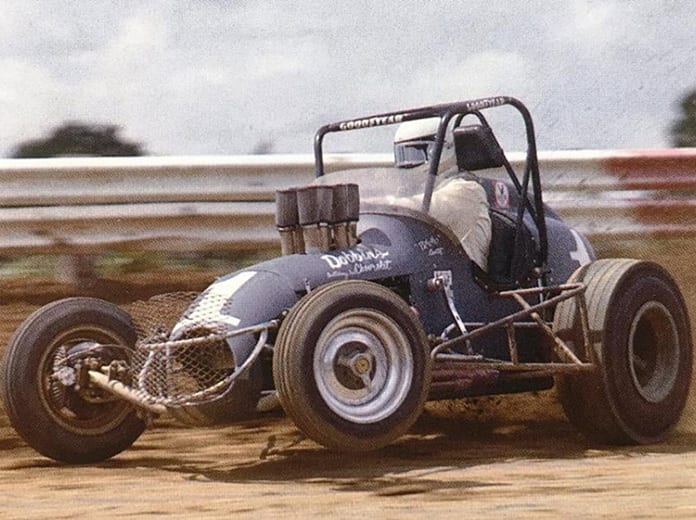
In 1974, he diversified his racing résumé by adding Indy cars to his skill set. His first time in an Indy car came at Indianapolis Motor Speedway. He’d never as much as sat in a rear-engine car before he took his rookie test. The transition didn’t faze him.
“Naw, I wasn’t concerned at all,” Carter said of that rookie run. “Hell, I’d race anything. It didn’t matter to me where the engine was located. Besides I had some good friends that were Indy car drivers, so I got a lot of input from them. That helped.”
Sure enough, Carter aptly transformed the aggressive approach required for sprint cars to the precise smoothness needed with an Indy car. He qualified 21st for his first 500 and raced to seventh, claiming rookie-of-the-year honors over a field that included Tom Sneva, Johnny Parsons Jr., Jan Opperman, Tom Bigelow and Larry Cannon.
Named Indy car series rookie of the year in 1974, Carter returned to Indianapolis in 1975 and finished fourth. That impressed Dan Gurney enough to sign him for the 1976 season. At Indianapolis, Carter put the Eagle in the second row and finished fifth.
He continued to run Indianapolis through 1991, capturing the pole in 1985. He led there and achieved solid finishing positions in sometimes not so excellent cars. Although Carter never won Indy, he topped the 1981 Michigan 500 at Michigan Int’l Speedway.
It’s been said the true greatness of a man remains unknown until he’s besieged with adversity and faces it down. In 1977, Carter did exactly that.
Testing at Phoenix Raceway in early December, a CV joint broke and he pounded the inside, frontstretch guardrail.
“I single-handedly shut down Phoenix for testing the rest of the winter while they replaced all that metal guardrail with a concrete wall,” Carter said laughing.
What was not humorous was how the crash ravaged him. It shattered his pelvis, ruptured his bladder, fractured both arms and damaged nerves in his back so severely that he’s left with a rolling limp to this day. Merely watching him walk is painful.
“The doctors told my wife, Carla, that I’d never drive again,” Carter recalled. “And that I’d better find another line of work. She told them, ‘I’m not telling him that. You go in and tell him.’ They did, and I told them to worry about getting me well and I’d worry about what I did to make money.”
Just over three months later, Carter returned to making money exactly how he wanted — in a race car. He returned with his aggressive style still intact, to win a USAC sprint car feature at Indianapolis Raceway Park. The next day, he won at Winchester.
“I’ve always been a competitive person in everything I attempt,” said Carter about his life as a racer. “I love that aspect of the sport. And, of course, I was born into it. Growing up, I saw racing as a lifestyle that I wanted to try. I tried it, found out I could do it and found out I could make good money at it.
“Racing is the best job in the world. You know it’s not bad working just two days a week,” Carter chuckled. “Most everybody looks forward to Friday because that’s the beginning of their time off. I look forward to Friday because that’s when I go to work.”
Carter still goes to work on Fridays.
He began spotting when John Barnes needed someone to bring along a young driver, Sam Hornish Jr., in the early days of Panther Racing.
After working with Hornish, Carter guided the racing efforts of Tomas Scheckter, Dan Wheldon and Martin Plowman. Ferrucci is his latest protégé.
“Absolutely. 100 percent,” Ferrucci said. “I need him with me.”
Great ones, you see, have a way of inspiring those around them.
